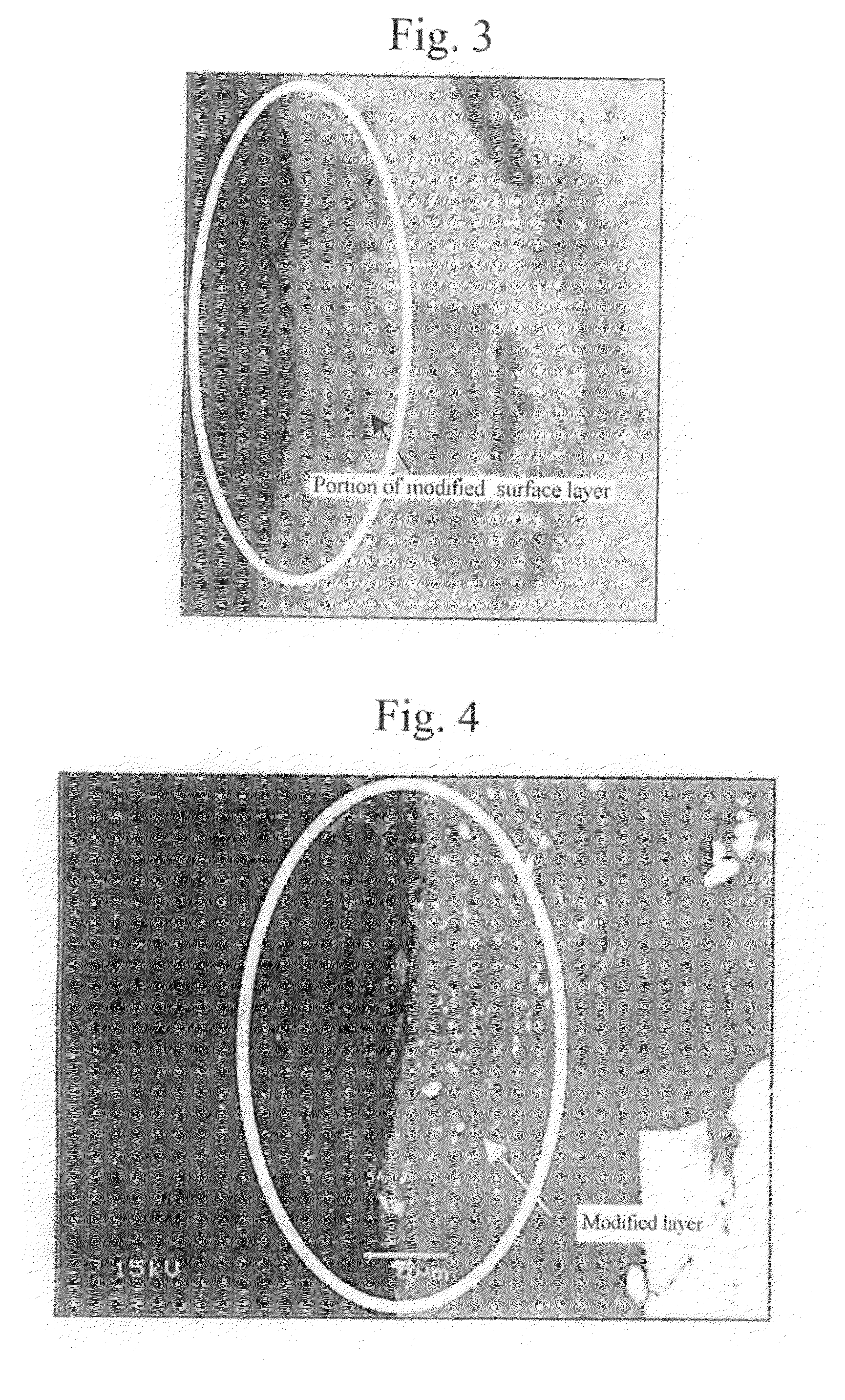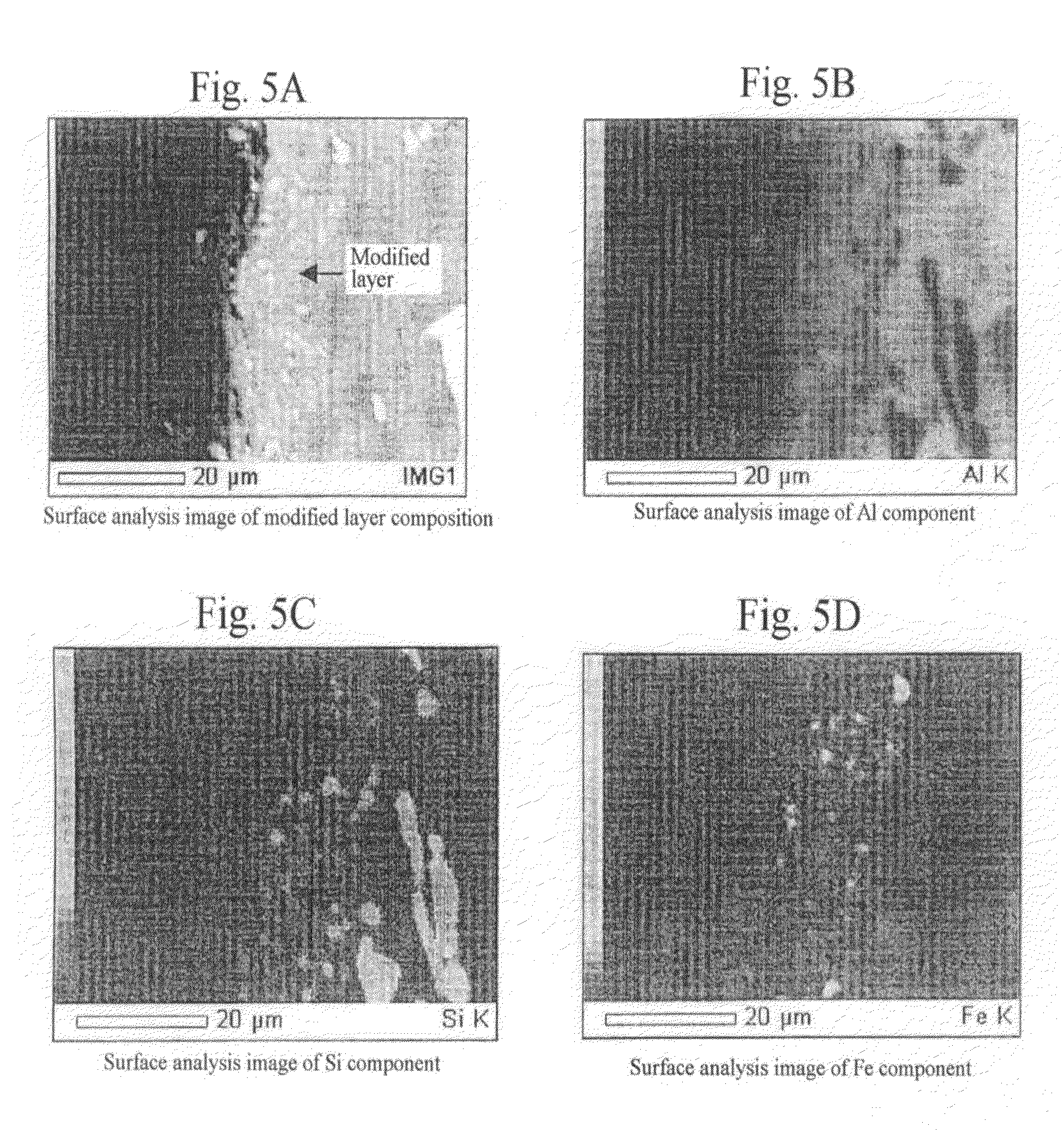Method for surface treatment of an internal combustion piston and an internal combustion piston
a technology of internal combustion pistons and surface treatment methods, which is applied in the direction of solid-state diffusion coating, machines/engines, manufacturing tools, etc., can solve the problems of internal combustion piston strength decline, weight saving by reducing thickness, and inability to complete combustion, etc., to achieve the effect of improving mechanical strength
- Summary
- Abstract
- Description
- Claims
- Application Information
AI Technical Summary
Benefits of technology
Problems solved by technology
Method used
Image
Examples
examples
[0153]Next, experimental examples of surface treatment by the method according to the present invention will be described.
Confirmation Test for Repair of Surface Flaws and Formation of Modified Layer
Purpose of Experiment
[0154]By performing surface treatment of the method according to the present invention, it is confirmed whether surface flaws of an internal combustion piston can be repaired, and whether a modified surface layer can be formed from the surface thereof to a predetermined depth.
Experimental Method
[0155]By using materials shown in Table 4 below, injection powders were injected on an Al—Si composition (internal combustion piston) shown in Table 2 under the treatment conditions shown in Table 3.
[0156]
TABLE 2Object to be treatedObject to be treatedPiston for a gasoline engineMaterialTable 4 (Al-12% Si, and others)Treatment portionSee FIG. 10Area of treatment portionApproximately 80 mm in diameter, Entireinner surface
[0157]
TABLE 3Treatment conditionsInjection powdersMateria...
example 9
[0221]
Experimental engineInline four-cylinder diesel engine (Turbo with intercooler)Use fuelStandard light fuelLubricant10W-30 CF-4
Experimental Results
[0222]Carbon Adhesion State
[0223]The results of carbon adhesion to the pistons are shown in Table 10.
[0224]
TABLE 10Carbon Deposition on the Piston Top SurfaceCylinder No.1 (injected3 (injectedwith Sn)2 (Untreated)with Ti)4 (Untreated)CarbonNoYesNoYESDeposition
[0225]Exhaust-Gas Temperature
[0226]According to the measurement results of temperatures (average value for 60 seconds) of exhaust gas discharged from the cylinders, although the exhaust-gas temperatures of the second and fourth cylinders fitted with the untreated pistons were approximately 670° C., it was confirmed that the exhaust-gas temperature of the first cylinder fitted with the piston treated by injecting injection powders containing powdered tin and that of the third cylinder fitted with the piston treated by injecting injection powders containing powdered titanium were l...
PUM
| Property | Measurement | Unit |
|---|---|---|
| diameter | aaaaa | aaaaa |
| temperature | aaaaa | aaaaa |
| velocity | aaaaa | aaaaa |
Abstract
Description
Claims
Application Information
 Login to View More
Login to View More - R&D
- Intellectual Property
- Life Sciences
- Materials
- Tech Scout
- Unparalleled Data Quality
- Higher Quality Content
- 60% Fewer Hallucinations
Browse by: Latest US Patents, China's latest patents, Technical Efficacy Thesaurus, Application Domain, Technology Topic, Popular Technical Reports.
© 2025 PatSnap. All rights reserved.Legal|Privacy policy|Modern Slavery Act Transparency Statement|Sitemap|About US| Contact US: help@patsnap.com



